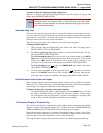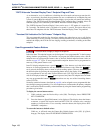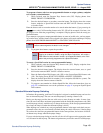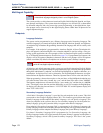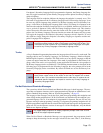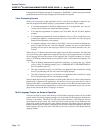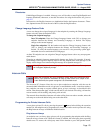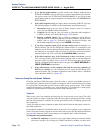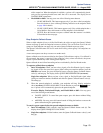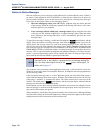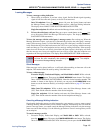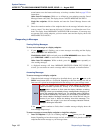
System Features
INTER-TEL
®
CS-5200/5400 ADMINISTRATOR GUIDE, ISSUE 1.1 – August 2005
Directories
Page 175
Directories
If Multilingual Support is enabled, directory users will be able to enter English/Spanish and
Japanese (Katakana) characters, as needed. Procedures for using the directories are given on
page 227.
In directories, the English characters are alphabetized before the Japanese characters. There-
fore, Japanese names will be at the end of the list, after the English names.
Change Language Feature Code
A user can change the assigned language for the endpoint by entering the Change Language
feature code only when the endpoint is idle.
To change the endpoint language:
Inter-Tel endpoints: Enter the Change Language feature code (301) to change your
endpoint between the Primary and Secondary Language, as desired. The display
changes to the current language.
Single line endpoints: Lift the handset and enter the Change Language feature code
(301) to change your endpoint between the Primary and Secondary Language, as
desired. (To verify the current language, you can call a voice processing system appli-
cation that does not override the device language.)
An Inter-Tel endpoint user can assign the Change Language feature code to any user-program-
mable button.
Changing an endpoint’s language automatically changes any display. For example, if an end-
point changes from English to Spanish while in Do-Not-Disturb mode with message 02, the
display would change from American English message 02 to Spanish message 02.
Intercom Calls
The intercom (IC) feature allows the user to place endpoint-to-endpoint calls that can be
answered either in handsfree mode or in private, or non-handsfree, mode. A user that reaches a
busy endpoint can camp on, request callback queue, or leave a message. As described in this
section, other features that apply to both outside and IC calls include call waiting, call transfer,
reverse transfer, call forwarding, and placing calls on hold.
The network allows handsfree intercom calls when calling from one node to another, unless the
call camps on to the node before being sent to the other node.
Programming for Private Intercom Calls
A user places private IC calls by pressing the pound ( ) button before dialing the extension
number. Or, the endpoint can be programmed to always send and/or receive private calls using
the Ring Intercom Always or Handsfree Disable features.
Ring Intercom Always
An endpoint user can always place private calls by programming the endpoint with the Ring
Intercom Always feature code. While this feature is enabled, the called party hears repeating
double tones. To answer, the called party must lift the handset or press the Speaker button,
NOTE
Only
digital display endpoints display Japanese prompts. Other Inter-Tel endpoints
do not support Japanese prompts.
NOTE
When the procedures tell you to hookflash, quickly press and release the hook-
switch. If you press the hookswitch to hang up, hold it down for a couple of sec-
onds. Otherwise, the system recognizes it as a hookflash/recall.
#



